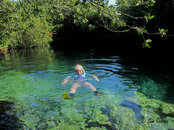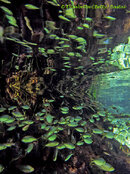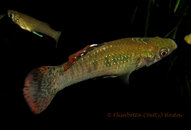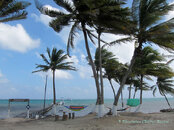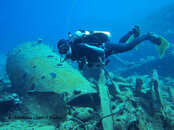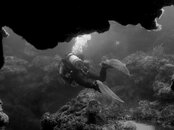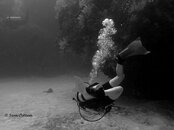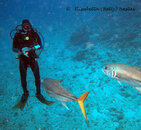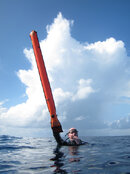This trip was different from most of our others, in terms of how people viewed our gear. In Tulum, the steel backplate, HOG rig, and long hose was not strange at all, unlike most other warm-water dive locations. We got plenty of curious interest in our funny-looking fins, but they were not completely unknown to everyone. In fact, Jules, the Australian woman who manages the XTC dive center in Xcalak uses Force Fins. Unfortunately, we never got to dive with her. We saw quite a few Jet-fin-type fins on the cave divers in the cenotes. I couldn't help but notice a bit of... attitude (was this just in my mind?) or at least disapproving looks from some of the cavers as we were exiting and they were entering one of the cenotes. I'm glad I had my Force Fins there, with their short length and efficiency. I'd think trying to get through those tight places with split fins would be terrible! The dive ops all rented paddle fins.
This problem of people running into stuff is a hard one. We are not terrible divers, but still we didn't get all the way through without at least some minor contact. I can only imagine what it's like with most of the divers there, who seem to have an average of less than 100 dives experience. The lines we followed were (I suppose) for the general diving public, but there were some tight spots that were almost impossible to get through without touching something. And the snorkelers! Forget about it. They seemed to have no idea at all that it's not good to kick up silt, or bang into the rocks.
Just like most natural places, we want to go there, but we don't want everybody messing it up. Sometimes it's not fun to realize that we may be part of the problem ourselves. We tried real hard to make no impact, and in the larger sense, when you consider how much of a "trace" we may have left, compared to the positive input provided by our fees, etc. I hope the net result was positive.




